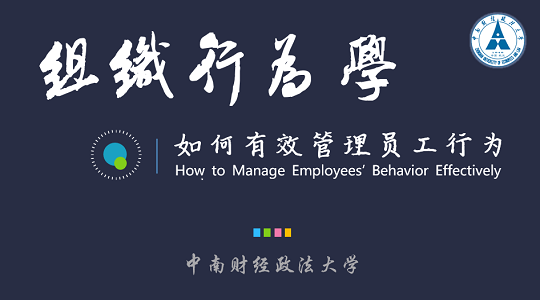
当前课程知识点:国际医学会议交际英语 > Chapter 12 Understanding Conference Etiquette > Exercise > Chapter 4 Part 3
Part Five
Common tips in making PowerPoint effective
PowerPoint is powerful when it is properly used
So avoid adding colors visual effects animations and images
to such an extent that may consequently ruin a presentation
Before preparing your PowerPoint first ask yourself
Should the PowerPoint be filled with text
How could I convey
what I want to say to the audience
How could I show the figure or data properly
Is my presentation simply too boring
Then pay attention to the following three criteria
Be professional
Be easy to read
And Be not distracting
To achieve these
keep the following dos and don'ts in mind
when you make an academic PowerPoint
First one is template and color scheme
You may choose from those ready-made templates
which are available online or make templates on your own
The suggestions are
Use your own template
which may save you much time
Pick those templates that are available
in both standard and widescreen formats
so that they can be well demonstrated
with different computers and projectors
Use template with high contrast of color scheme
Make sure the text looks fine
not only on your computer screen but also when projected
Take a look at the color wheel below
you'll find opposite colors on the wheel have high contrast
It seems yellow text on a blue background
will be the most visible to the most people
taking various forms of colorblindness into consideration
Don't use pure bright yellow on pure bright blue
because the contrast will just burn the eyeballs
out of your skull
So just make sure your color scheme has good contrast
between text and background
but not too high
In an academic presentation roughly
people use dark text on light background
or light text on dark background
that is "black on white" or "white on black"
However, dark backgrounds sometimes make it difficult
for some people to read the text
light ones are preferable
You may also try very dark gray
on a very light gray
That should provide good contrast for readability
without causing a lot of unnecessary eye-strain
over the course of an hour-long presentation
You can of course adapt this idea
for any colors you want
Put page numbers in the same location on each slide
Page numbers are important esp
when there is question time given to your presentation
The second is font and font size
An academic presentation wants no dazzling effects
but a clean and clear one
with everything to the point
So try not to use many fonts in one presentation
These are the criteria for picking fonts
Stick to fonts that are common to every computer
Pick those should work well on digital displays or projectors
Avoid Serif Fonts such as Times New Roman or Palatino
because these forms are sometimes more difficult to read
Pick Sans-Serif Fonts such as Arial or Helvetica
Serifs with the small line "tails"
at the edges of the letters
Sans-Serifs do not have the tails
at the edge of the letter
and are best to be read on the screen
especially with people having reading difficulties or dyslexia
Serifs are better to read when printed
Avoid using all capital letters—even for titles
All capitals will bring too strong a visual shock
and words are more difficult to read
Choose one font for your titles
and another for your body text
This makes text slides
a little bit more friendly to read
Avoid script type fonts—always
These fonts are hard to read
Make the font size large enough
to be easily read from the back wall of the room
Usually any phone size less than 24 points
is too small
to be reasonably read in most production situations
So keep most text at a 28 or 32 point size
with titles being 36 to 44 point size
To test the font, stand six feet from the monitor and see if you can read the slide
Keep the font size consistent in titles subtitles texts etc
If you give a subtitle 36
the other subtitles should also be 36
a text 28 the rest 28 so on and so forth
The third one is text
When you do the presentation
the audience is actually listening to you
not reading your slides
so you need to put those supportive images or words
on your slide
and avoid putting everything you want to say
In this case
bullet points could help you to structure your supporting details
and simplify your language
If employed properly
they are quite helpful
A slide without bullet points may also be more attractive
since it provides with more varieties
So design your text carefully to attract the audience's attention
The following suggestions may be helpful
Clearly label each screen
Use a larger font or different color for the title
Apply the 6 x 6 rule
That is no more than 6 words per line
and no more than 6 lines per slide
Too much information on a slide
gets confusing and hard to read
Remember
the audience is to listen to you
not to read your text
Avoid italicized fonts or shadowed text
as these are difficult to read quickly
Make sure each bullet point appears one by one
so that you could control
what your audience sees at any given time
otherwise, they will read ahead of you
and miss a significant part of your presentation
if the information is viewable in the screen
Don't forget to give the lines appropriate spacing
Highlight those important parts with bold face or another color
Paralleled phrases are more acceptable than sentences
Actually there's hardly ever a need
for a complete sentence in a slide presentation
Make slide transitions from one topic or point to another
so that it attracts attention and focuses interest
Use either italics or bold
not both to show your emphasis
Avoid abbreviations and acronyms if not necessary
Capitalize the initial letter of the first word
in each bullet point
Always check and recheck your spelling
Mistakes in spelling may not bring a disaster
to your presentation
It does leave the audience
an impression of a careless presenter
Avoid Chinese characters and Chinese punctuations
in an English presentation
Remember
Less is more
The less you show on your slide
the more attentive the audience will be to your speech
The fourth one is visual effects
When you do the presentation
what you want is when you speak
the audience is listening to you
when the text comes on the screen
the audience reads the text
and then focuses back to listen to the speech
So do not use crazy effects to distract the audience
Use limited and subtle effects like
"fade in" and "fade out"
since in a long presentation
frequent crazy effects equal eyes bleeding
Stop the moving text
Use "appear" effect
Use the "dim text" feature for bullet points
This places the emphasis on the current issue
and brings it to the forefront
while you are making your point
Punctuation marks
Punctuation marks are more often than not ignored by presenters
However when they are used
they should be used properly
Limit punctuation marks
For the bullet points if you don't use punctuation marks
just avoid using it in each bullet point
and if you use at the end of one point
apply to every point in every slide
Switch to English input
when you type in the English punctuation marks
Avoid using such Chinese punctuations as "、" and "《》"
use a comma to indicate a pause
and italicize or boldface
the name of the book
Space after the punctuation marks instead of before them
except the opening quotation and parentheses marks
There is no space before
or after a dash and a hyphen
No space is placed
after the closing quotation mark
also the closing parentheses mark
if it followed by another punctuation mark
period, for example
Ellipsis has three periods instead of six
Put a comma between the day and the year
when you employ the month-day-year pattern
No comma is needed in a day-month-year pattern
for example
Avoid putting the opening parentheses or quotation mark
at the end of a line
and the closing ones at the beginning of a line
Use comma or semicolon instead of period
at the end of the bullet point
as most of them are not sentences
Images videos and audios
Images videos and audios
should be wisely used in your presentation
since they can help save a lot of words
When you want to use them
keep the following suggestions in mind
Use images/pictures wisely
A picture speaks a thousand words
It's time-saving and vivid-looking
Avoid irrelevant pictures
no matter how attractive they look
especially animations
Choose large images of high quality
Don't take small images
because they may be distorted
when you project them on the screen
Avoid pictures with a watermark or any other distracting stains
Videos and audios are also welcome to assist your presentation
especially when you explain abstract or complex information
but you need to have a good control
of the time
Add captions to your videos
Citations
You may use a lot of information
taken from other sources
for example pictures data quotations videos/audios etc
Anything mentioned above
if is not original
should be cited correctly
Citation helps to avoid plagiarism
and citing properly
gives credit to the original author
To cite your sources within a PowerPoint presentation
you can include your references
or in-text citations on each slide
You can choose the following ways to cite
Provide the references verbally
for example
you can say
Based on the research by John Smith in 2002 ...
or you can provide a reference list slide
at the end of your presentation
with corresponding in-text citations
which is usually simple
in order not to crowd the slide
and which is placed at the bottom of the slide
As full citations take much space
many presenters choose truncated references
just the first author, journal and year
like the following example
-Exercise
-Exercise
-Exercise
-Exercise
-Exercise






